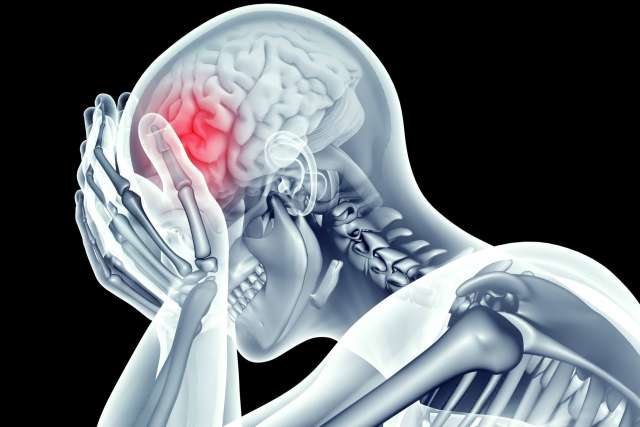Migraines don’t kill, but they shorten life all the same. Every day spent in the grip of a debilitating headache is a day lost. “You don’t get those days back,” says neurologist Peter Goadsby, MD, PhD, DSc. “You lose part of your life — and not at the back end, but at the productive time.”
Dr Goadsby, who joined the faculty in the UCLA Goldberg Migraine Program in July, is clearly passionate when he talks about migraine. “There is a simply appalling lack of appropriately trained neurologist headache specialists to care for the more disabled end of the migraine spectrum,” he says.

At UCLA, Dr Goadsby aims to encourage more neurology trainees into headache fellowships with an emphasis on a research-based “bench-to-bedside” approach to patient care. Working with Andrew Charles, MD, director of the UCLA Goldberg Migraine Program, he plans to expand the center to include inpatient treatment.
“We both have very clear-eyed ideas of how to take a research-trained, educational approach and evolve that in clinical care,” says Dr. Goadsby. “For me, it’s an ideal fit with an ideal person at an ideal time.”
RELATED ARTICLE: Pain like no other
In 1995, Dr. Goadsby launched the UK’s first inpatient migraine unit at the National Hospital in London, a program which is still in operation. He went on to work at the Institute of Neurology at University College London, National Hospital for Neurology and Neurosurgery, and Great Ormond Street Hospital for Sick Children. In 2007, he moved to UCSF, where he built inpatient programs for pediatric and adult migraine.
Now, he’s bringing that experience and energy to Southern California. While inpatient treatment for headache may sound radical, it provides many advantages for treating severe cases. As inpatients, headache sufferers can receive intravenous therapies on a carefully controlled dosage schedule that optimizes effectiveness and limits side effects.
Maintaining a solid scientific foundation for treatment protocols is key to delivering the best care to patients. “Very often migraine is taken as an alchemy process,” he says.
“If you want to engage the next generation of practitioners in headache you’ve got to give them a solid scientific basis so they can explain what they do,” he says. “It’s no good to just say, ‘That’s what I do.’ You’ve got to be able to say, ‘Here’s the basis for why I do it.’”
To move the research forward, Dr. Goadsby plans to collaborate with UCLA’s top-notch imaging experts. The ability to combine functional and pharmacological imaging will open new doors to understanding how migraines begin, and how drugs affect function in different regions of the brain.
“It is one of the attractions to have human imaging capabilities across a range of technologies that are second to none,” he says. “I’m so much looking forward to being able to get the answers to questions that we don’t yet know, particularly taking advantage of functional imaging and this expertise that’s been built up over many years.”
UCLA welcomes Dr. Goadsby to the Department of Neurology with great anticipation for his efforts to advance basic and clinical research, education and patient care.
“Peter Goadsby is widely recognized as the preeminent clinician/scientist in headache medicine in the world,” says Dr. Charles. “His contributions to the understanding of migraine and other headache disorders, and to the development of transformational therapies, have been extraordinary. We are truly fortunate to have the opportunity to work with him here at UCLA, and look forward to highly synergistic work with our group that will accelerate major progress in our field.”
As for Dr. Goadsby, he is not resting on his laurels. “I’m not looking backward on the things I’ve done and thinking, well, that was good enough,” he says. “You can always do better.”
Caroline Seydel is the author of this article.




